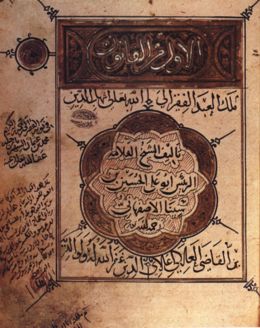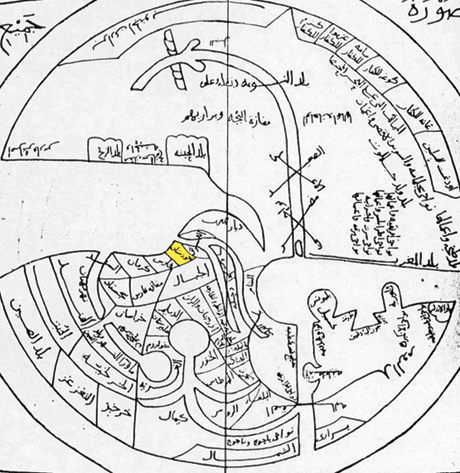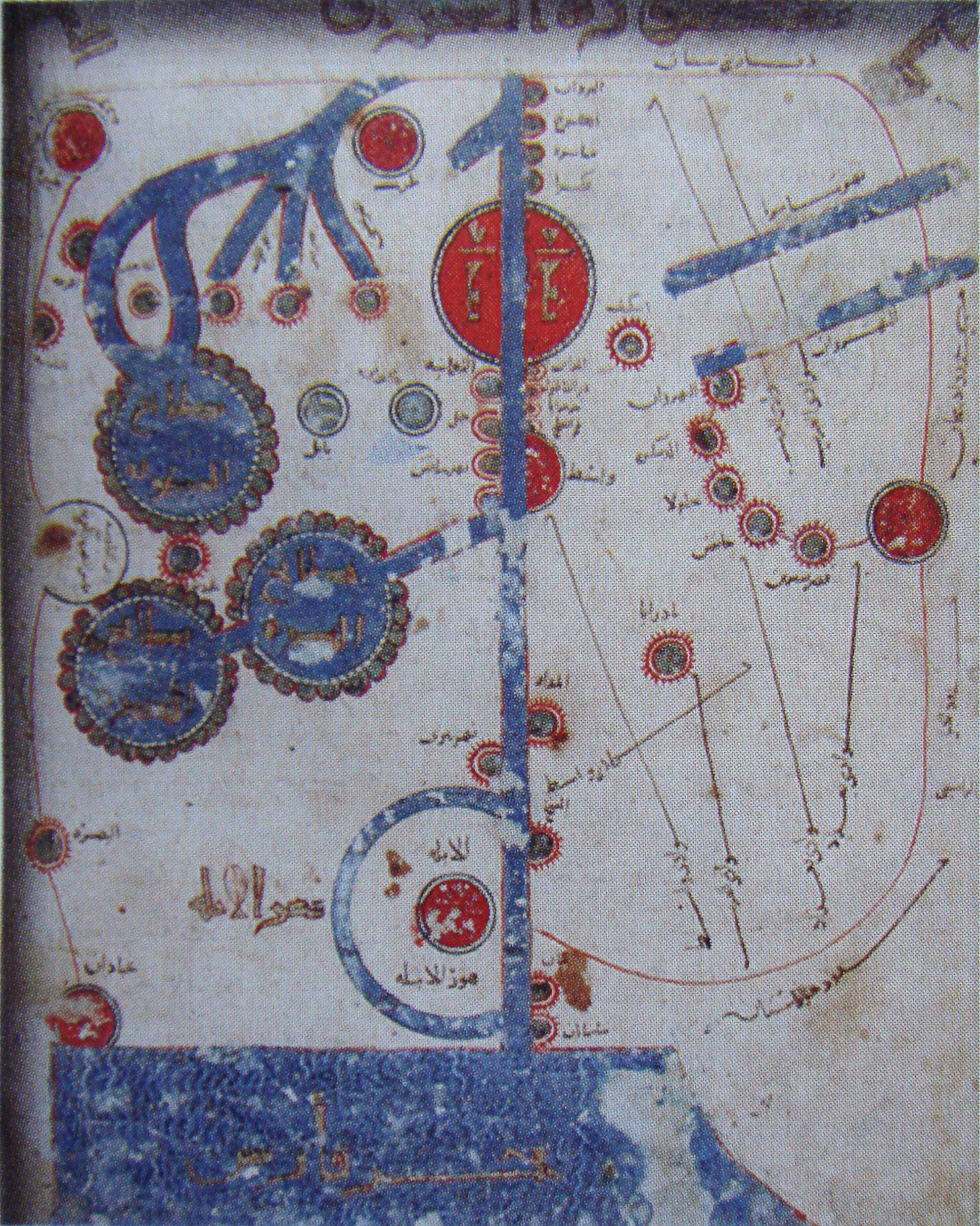|
Multan Sun Temple
The Sun Temple of Multan was a temple dedicated to Surya, the Hindu Sun God, in the city of Multan. It commanded significant fame in the subcontinent as a place of pilgrimage and wealth under Hindu as well as Islamic rule before being destroyed in the late tenth century. It appears to have been reconstructed, before being purportedly obliterated by Aurangzeb. The location of the temple remains unknown to historical certainty; however, it is distinct from the Prahladpuri Temple. Hindu Legends The earliest extant Hindu text to mention of a solar cult is Samba Purana (c. 7th–8th century CE) — the associated legend made its way into the Bhavishya Purana and even a twelfth century inscription in Eastern India. After being cursed into a leper, Samba had urged Krishna to restore his youth, who noted of the Sun-God (''Surya'') alone to have had such abilities. So, acting upon the advice of Narada, Samba left for the forests of Mitravan on the banks of Chandrabhaga, which alrea ... [...More Info...] [...Related Items...] OR: [Wikipedia] [Google] [Baidu] |
Pakistan
Pakistan ( ur, ), officially the Islamic Republic of Pakistan ( ur, , label=none), is a country in South Asia. It is the world's fifth-most populous country, with a population of almost 243 million people, and has the world's second-largest Muslim population just behind Indonesia. Pakistan is the 33rd-largest country in the world by area and 2nd largest in South Asia, spanning . It has a coastline along the Arabian Sea and Gulf of Oman in the south, and is bordered by India to the east, Afghanistan to the west, Iran to the southwest, and China to the northeast. It is separated narrowly from Tajikistan by Afghanistan's Wakhan Corridor in the north, and also shares a maritime border with Oman. Islamabad is the nation's capital, while Karachi is its largest city and financial centre. Pakistan is the site of several ancient cultures, including the 8,500-year-old Neolithic site of Mehrgarh in Balochistan, the Indus Valley civilisation of the Bronze Age, the most extens ... [...More Info...] [...Related Items...] OR: [Wikipedia] [Google] [Baidu] |
Brahmin Dynasty Of Sindh
The Brahmin dynasty of Sindh (), also known as the Chacha dynasty, were the Brahmin Hindu ruling family of the Chacha Empire. The Brahmin dynasty were successors of the Rai dynasty. The dynasty ruled on the Indian subcontinent which originated in the region of Sindh, present-day Pakistan. Most of the information about its existence comes from the ''Chach Nama'', a historical account of the Chach-Brahmin dynasty. After the Chacha Empire's fall in 712, though the empire had ended, its dynasty's members administered parts of Sindh under the Umayyad Caliphate's Caliphal province of Sind. These rulers include Hullishāh and Shishah. History The dynasty was founded by a Brahmin named Chach of Alor after he married the widow of Rai Sahasi II, the last ruler of the Rai dynasty. His claim was further secured by the killing of Rai Sahasi II's brother. The rule of Sindh by a Buddhist dynasty raised hope in the Umayyad Caliphate. Caliph Abd al-Malik ibn Marwan granted a large army ... [...More Info...] [...Related Items...] OR: [Wikipedia] [Google] [Baidu] |
Ibn Al-Nadim
Abū al-Faraj Muḥammad ibn Isḥāq al-Nadīm ( ar, ابو الفرج محمد بن إسحاق النديم), also ibn Abī Ya'qūb Isḥāq ibn Muḥammad ibn Isḥāq al-Warrāq, and commonly known by the ''nasab'' (patronymic) Ibn al-Nadīm ( ar, ابن النديم; died 17 September 995 or 998) was an Arab Muslim bibliographer and biographer of Baghdad who compiled the encyclopedia ''Kitāb al-Fihrist'' (''The Book Catalogue''). Biography Much known of al-Nadim is deduced from his epithets. 'Al-Nadim' (), 'the Court Companion' and 'al-Warrāq () 'the copyist of manuscripts'. Probably born in Baghdad ca. 320/932 he died there on Wednesday, 20th of Shaʿban A.H. 385. He was a Persian or perhaps an Arab. From age six, he may have attended a ''madrasa'' and received comprehensive education in Islamic studies, history, geography, comparative religion, the sciences, grammar, rhetoric and Qurʾanic commentary. Ibrahim al-Abyari, author of ''Turāth al-Insaniyah'' says al-Nadim ... [...More Info...] [...Related Items...] OR: [Wikipedia] [Google] [Baidu] |
Ibn Hawqal
Muḥammad Abū’l-Qāsim Ibn Ḥawqal (), also known as Abū al-Qāsim b. ʻAlī Ibn Ḥawqal al-Naṣībī, born in Nisibis, Upper Mesopotamia; was a 10th-century Arab Muslim writer, geographer, and chronicler who travelled during the years 943 to 969 AD. Ludwig W. Adamec (2009), ''Historical Dictionary of Islam'', p.137. Scarecrow Press. . His famous work, written in 977 AD, is called (; "The face of the Earth"). The date of his death, known from his writings, was after 368 AH/978 AD. Biography Details known of Ibn Hawqal's life are extrapolated from his book. He spent the last 30 years of his life traveling to remote parts of Asia and Africa and writing about what he saw. One journey brought him 20° south of the equator along the East African coast where he discovered large populations in regions the ancient Greek writers had deemed, from logic rather than knowledge, were uninhabitable. Ṣūrat al-’Arḍ Ibn Hawqal based his great work of geography on a revision ... [...More Info...] [...Related Items...] OR: [Wikipedia] [Google] [Baidu] |
Ahmad Ibn Rustah
Ahmad ibn Rustah Isfahani ( fa, احمد ابن رسته اصفهانی ''Aḥmad ibn Rusta Iṣfahānī''), more commonly known as Ibn Rustah (, also spelled ''Ibn Rusta'' and ''Ibn Ruste''), was a tenth-century Persian explorer and geographer born in Rosta district, Isfahan, Persia. He wrote a geographical compendium known as ''Kitāb al-A‘lāq al-Nafīsa'' ( ar, كتاب الأعلاق النفيسة, ''Book of Precious Records''). The information on his home town of Isfahan is especially extensive and valuable. Ibn Rustah states that, while for other lands he had to depend on second-hand reports, often acquired with great difficulty and with no means of checking their veracity, for Isfahan he could use his own experience and observations or statements from others known to be reliable. Thus we have a description of the twenty districts (''rostaqs'') of Isfahan containing details not found in other geographers' works. Concerning the town itself, we learn that it was perfectl ... [...More Info...] [...Related Items...] OR: [Wikipedia] [Google] [Baidu] |
Al-Masudi
Al-Mas'udi ( ar, أَبُو ٱلْحَسَن عَلِيّ ٱبْن ٱلْحُسَيْن ٱبْن عَلِيّ ٱلْمَسْعُودِيّ, '; –956) was an Arab historian, geographer and traveler. He is sometimes referred to as the "Herodotus of the Arabs". A polymath and prolific author of over twenty works on theology, history (Islamic and universal), geography, natural science and philosophy, his celebrated magnum opus '' Murūj al-Dhahab wa-Ma'ādin al-Jawhar'' ( ar, مُرُوج ٱلذَّهَب وَمَعَادِن ٱلْجَوْهَر, link=no), combines universal history with scientific geography, social commentary and biography, and is published in English in a multi-volume series as '' The Meadows of Gold and Mines of Gems''. Birth, travels and literary output Apart from what Al-Mas'udi writes of himself little is known. Born in Baghdad, he was descended from Abdullah Ibn Mas'ud, a companion of Muhammad. He mentions many scholar associates met on his travels t ... [...More Info...] [...Related Items...] OR: [Wikipedia] [Google] [Baidu] |
Al-Maqdisi
Shams al-Dīn Abū ʿAbd Allāh Muḥammad ibn Aḥmad ibn Abī Bakr al-Maqdisī ( ar, شَمْس ٱلدِّيْن أَبُو عَبْد ٱلله مُحَمَّد ابْن أَحْمَد ابْن أَبِي بَكْر ٱلْمَقْدِسِي), better known as al-Maqdisī ( ar, links=no, ٱلْمَقْدِسِي) or al-Muqaddasī ( ar, links=no, ٱلْمُقَدَّسِي), ( – 991) was a medieval Arab geographer, author of ''Aḥsan al-taqāsīm fī maʿrifat al-aqālīm'' (''The Best Divisions in the Knowledge of the Regions''), as well as author of the book, ''Description of Syria (Including Palestine)''. He is one of the earliest known historical figures to self-identify as a Palestinian during his travels. Biography Sources Outside of his own work, there is little biographical information available about al-Maqdisi.Miquel 1993, p. 492. He is neither found in the voluminous biographies of Ibn Khallikan (d. 1282) nor were the aspects of his life mentioned in the works of hi ... [...More Info...] [...Related Items...] OR: [Wikipedia] [Google] [Baidu] |
Istakhri
Abu Ishaq Ibrahim ibn Muhammad al-Farisi al-Istakhri () (also ''Estakhri'', fa, استخری, i.e. from the Iranian city of Istakhr, b. - d. 346 AH/AD 957) was a 10th-century travel-author and geographer who wrote valuable accounts in Arabic of the many Muslim territories he visited during the Abbasid era of the Islamic Golden Age. There is no consensus regarding his origin. Some sources describe him as Persian, while others state he was Arab. IV:222b-223b. The ''Encyclopedia Iranica'' states: "Biographical data are very meager. From his ''nesbas'' (attributive names) he appears to have been a native of Eṣṭaḵr in Fārs, but it is not known whether he was Persian". VIII(6):646-647 (I have used the updated online version). Istakhri's account of windmills is the earliest known. Istakhri met the celebrated traveller-geographer Ibn Hawqal, while travelling, and Ibn Hawqal incorporated the work of Istakhri in his book ''Kitab al-Surat al-Ard''. Works Istakhri's two survi ... [...More Info...] [...Related Items...] OR: [Wikipedia] [Google] [Baidu] |
Chach Nama
''Chach Nama'' ( sd, چچ نامو; ur, چچ نامہ; "Story of the Chach"), also known as the ''Fateh nama Sindh'' ( sd, فتح نامه سنڌ; "Story of the conquest of Sindh"), and as ''Tareekh al-Hind wa a's-Sind'' ( ar, تاريخ الهند والسند; "History of India and Sindh"), is one of the main historical sources for the history of Sindh in the seventh to eighth centuries CE, written in Persian. The text, which purports to be a Persian translation by `Ali Kufi (13th-century) of an undated, original Arabic text, has long been considered to be the story of the early 8th-century conquests by the Umayyad general Muhammad bin Qasim. The text is significant because it has been a source of colonial understanding of the origins of Islam and the Islamic conquests in the Indian subcontinent. It influenced the debate on the partition of British India and its narrative has been included in the state-sanctioned history textbooks of Pakistan. However, according to Manan Ahme ... [...More Info...] [...Related Items...] OR: [Wikipedia] [Google] [Baidu] |
Abd Al-Malik Ibn Marwan
Abd al-Malik ibn Marwan ibn al-Hakam ( ar, عبد الملك ابن مروان ابن الحكم, ʿAbd al-Malik ibn Marwān ibn al-Ḥakam; July/August 644 or June/July 647 – 9 October 705) was the fifth Umayyad caliph, ruling from April 685 until his death. A member of the first generation of born Muslims, his early life in Medina was occupied with pious pursuits. He held administrative and military posts under Caliph Mu'awiya I (), founder of the Umayyad Caliphate, and his own father, Caliph Marwan I (). By the time of Abd al-Malik's accession, Umayyad authority had collapsed across the Caliphate as a result of the Second Muslim Civil War and had been reconstituted in Syria and Egypt during his father's reign. Following a failed invasion of Iraq in 686, Abd al-Malik focused on securing Syria before making further attempts to conquer the greater part of the Caliphate from his principal rival, the Mecca-based caliph Abd Allah ibn al-Zubayr. To that end, he concluded an ... [...More Info...] [...Related Items...] OR: [Wikipedia] [Google] [Baidu] |
Ibn Al-Jawzi
ʿAbd al-Raḥmān b. ʿAlī b. Muḥammad Abu 'l-Faras̲h̲ b. al-Jawzī, often referred to as Ibn al-Jawzī (Arabic: ابن الجوزي, ''Ibn al-Jawzī''; ca. 1116 – 16 June 1201) for short, or reverentially as ''Imam Ibn al-Jawzī'' by some Sunni Muslims, was an Arab Muslim jurisconsult, preacher, orator, heresiographer, traditionist, historian, judge, hagiographer, and philologist who played an instrumental role in propagating the Hanbali school of orthodox Sunni jurisprudence in his native Baghdad during the twelfth-century. During "a life of great intellectual, religious and political activity," Ibn al-Jawzi came to be widely admired by his fellow Hanbalis for the tireless role he played in ensuring that that particular school – historically, the smallest of the four principal Sunni schools of law – enjoy the same level of "prestige" often bestowed by rulers on the Maliki, Shafi'i, and Hanafi rites. Ibn al-Jawzi received a "very thorough education" during his ... [...More Info...] [...Related Items...] OR: [Wikipedia] [Google] [Baidu] |
Maund
The maund (), mun or mann (Bengali: ; Urdu: ) is the anglicized name for a traditional unit of mass used in British India, and also in Afghanistan, Persia, and Arabia:. the same unit in the Mughal Empire was sometimes written as ''mann'' or ''mun'' in English, while the equivalent unit in the Ottoman Empire and Central Asia was called the ''batman''. At different times, and in different South Asian localities, the mass of the maund has varied, from as low as 25 pounds (11 kg) to as high as 160 pounds (72½ kg): even greater variation is seen in Persia and Arabia... History In British India, the maund was first standardized in the Bengal Presidency in 1833, where it was set equal to 100 Troy pounds (82.28 lbs. av.). This standard spread throughout the British Raj.. After the independence of India and Pakistan, the definition formed the basis for metrication, one maund becoming exactly 37.3242 kilograms.. A similar metric definition is used in ... [...More Info...] [...Related Items...] OR: [Wikipedia] [Google] [Baidu] |




.jpg)

.jpg)